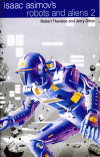
As I sat down to write this review, I realized I couldn’t remember the last time I read an entire physical book. Since 2018, all my novel reading has been on a Kindle Paperwhite. Before that, I used a Kindle Fire but still alternated with physical books. Reading on the Fire was always a bit of a hassle because of the glare. The Paperwhite’s e-paper display is in a completely different league. I like it so much that when I revisited the Foundation novels a few years ago, I borrowed the ebooks from my local library even though I already had the physical copies on my shelf. One nice perk of the Paperwhite is that it’s easier to read while eating because I can flip pages with my knuckle.
Recently I wanted to disconnect from electronics before bed. The best way seemed to be grabbing something from my bookshelf that I hadn’t read yet and didn’t already have digitally. That’s when I noticed Svaha by Charles de Lint. I vaguely remembered seeing a recommendation for it years ago and picking up a copy through Book Mooch, a site where people trade books they’re done with. I’m pretty sure it’s been sitting unread for over ten years.
When I pulled Svaha off the shelf, I could barely remember how or why I got it. The cover, showing a Native American man with a wolf, didn’t ring any bells, and the back-cover description didn’t sound like my usual genre. Most of my reading leans toward science fiction and, more recently, fantasy. Still, I decided to trust my past self and give it a shot.
The story takes place in Canada sometime after 2094. Without spoiling too much, the setup is that in the 1990s a Native American named Daniel Hollow Horn became a music superstar and used his fortune to educate and empower his people. Over time they became world leaders in science, technology, and law, eventually surpassing the rest of the world. After a period of war, they withdrew into self-contained “Enclaves,” kind of like Wakanda from Black Panther, except everyone knows where they are. They managed to protect themselves from the pollution and fallout left behind while the rest of the world fell apart.
De Lint introduces several characters in short bursts early on. The main character, Gahzee, is chosen to leave the Enclave on a mission. Then there’s Lisa, a messenger whose package gets stolen. Other characters come in gradually as the story builds into a complex mix of conflicts between Japanese corporations, the Yakuza, Chinese tongs, and an odd organization called the Jones Co-Op.
I was pleasantly surprised to find some cyberpunk elements woven in. Since Snow Crash and Neuromancer are two of my favorite books, that was a nice bonus. I also liked the mythical side of the story, especially Gahzee’s time in “Dreamtime,” which is this world’s version of spirit walking. The combination of science fiction, mysticism (which feels different from straight fantasy), and technology works really well together.
Svaha ended up being a short and enjoyable read at just 306 pages in mass-market paperback. I finished it in about two weeks, reading 30–60 minutes before bed most nights. It was a nice change from the massive fantasy novels I’ve been listending to lately, like Brandon Sanderson’s Stormlight Archive, which would run around 1,500 pages each. De Lint keeps things focused and tight. I’m not saying Sanderson’s writing isn’t good, but the sheer length can be tiring sometimes.
If you’re looking for an interesting book that mixes genres in unexpected ways, give Svaha a try.
From the novel:
Svaha – Amerindian; the time between seeing the lightning and hearing the thunder; a waiting for promises to be fulfilled.


